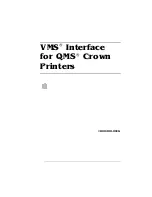
Volume-based cloning at the file level is supported only for FAT, FAT32, NTFS,
ext2, ext3, and ReiserFS file systems.
Dynamic source disks are read but not preserved during volume-based
conversions. Dynamic disks are converted into basic volumes on the target
virtual machine.
Volume-based cloning at
the block level
Performed when you choose to preserve the size of the source volume or when
you specify a larger volume size for NTFS source volumes.
For certain cloning modes, Converter Standalone might not support some types of source volumes.
Table 1-3
shows the supported and nonsupported source volume types.
Table 1-3.
Supported and Nonsupported Source Volumes
Cloning Mode
Supported Source Volumes
Nonsupported Source Volumes
Virtual machine conversion
n
Basic volumes
n
All types of dynamic volumes
n
Master boot record (MBR) disks
n
RAID
n
GUID partition table (GPT) disks
Powered-on machine conversion
All types of source volumes that
Windows recognizes
Disk-Based Cloning
Converter Standalone supports disk-based cloning to import existing virtual machines.
Disk-based cloning transfers all sectors from all disks and preserves all volume metadata. The destination
virtual machine receives partitions of the same type, size, and structure, as the partitions of the source virtual
machine. All volumes on the source machine's partitions are copied as they are.
Disk-based cloning supports all types of basic and dynamic disks.
Full and Linked Clones
Clones can be full or linked depending on the amount of data copied from the source to the destination machine.
A full clone is an independent copy of a virtual machine that shares nothing with the parent virtual machine
after the cloning operation. Ongoing operation of a full clone is separate from the parent virtual machine.
Because a full clone does not share virtual disks with the parent virtual machine, full clones generally perform
better than linked clones. Full clones take longer to create than linked clones. Creating a full clone can take
several minutes if the files involved are large.
You can create a full clone by using any disk clone type other than the linked clone type.
A linked clone is a copy of a virtual machine that shares virtual disks with the parent virtual machine in an
ongoing manner. A linked clone is a fast way to convert and run a new virtual machine. You can create a linked
clone from the current state, or snapshot, of a powered-off virtual machine. This practice conserves disk space
and allows multiple virtual machines to use the same software installation.
All files available on the source machine at the moment of the snapshot continue to remain available to the
linked clone. Ongoing changes to the virtual disk of the parent do not affect the linked clone, and changes to
the disk of the linked clone do not affect the source machine. If you make changes to a source Virtual PC and
Virtual Server machines, or to LiveState images, the linked clone is corrupted and you cannot use it anymore.
A linked clone must have access to the source. Without access to the source, you cannot use a linked clone at
all.
For more information on how to create a linked clone, see
“Create a Linked Clone,”
on page 59.
Chapter 1 Introduction to VMware vCenter Converter Standalone
VMware, Inc.
17
Содержание CONVERTER STANDALONE 4.3
Страница 6: ...VMware vCenter Converter Standalone User s Guide 6 VMware Inc...
Страница 32: ...VMware vCenter Converter Standalone User s Guide 32 VMware Inc...
Страница 40: ...VMware vCenter Converter Standalone User s Guide 40 VMware Inc...
Страница 74: ...VMware vCenter Converter Standalone User s Guide 74 VMware Inc...
Страница 84: ...VMware vCenter Converter Standalone User s Guide 84 VMware Inc...
Страница 96: ...VMware vCenter Converter Standalone User s Guide 96 VMware Inc...
















































